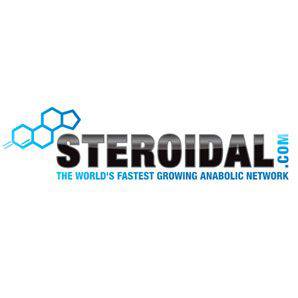By Dan Chaiet, Senior Editor – Steroidal.com
I had been meaning to discuss this news much sooner, but our blog here at Steroidal.com only recently launched this week. On October 28, 2013, the results of a recent study on anabolic steroids was released that sheds a more interesting and positive light on anabolic steroid use and its effects on muscle changes and performance. A recent study conducted at the University of Oslo in Norway discovered that the brief administration of anabolic steroids in mice resulted in a greater amount of muscle mass and a greater number of myonuclei in the muscle fibers long after the anabolic steroid administration had ended (Bruusgaard et al. 2013). This indicated to researchers that there could possibly be some sort of a yet-undefined ‘cellular memory mechanism’ within muscle that has been exposed to suraphysiological levels of androgens.
Mice were treated with Testosterone Propionate (a short-ester variant of Testosterone) for a total of 14 days. This 14-day treatment of Testosterone Propionate resulted in a significant increase in muscle mass (77% increase) as well as an increase of cell nuclei (66% increase). This is what would typically be expected from anabolic steroid use. Three weeks after administration ceased, muscle size decreased to the same size of mice that were not treated with anabolic steroids, but the number of myonuclei remained the same for up to three months afterwards! What follows becomes even more interesting: three months after the anabolic steroid administration had ended, the mice’s muscles (still very rich in myonuclei) experienced a growth of 31% over 6 days upon re-introduction to overload-exercise. In comparison, the control group (the mice that were not administered any anabolic steroids at all) experienced no significant changes in muscle mass following the same re-introduction to overload-exercise.
So, what does this mean? It means A LOT! While many news articles reporting on this study have been (overly) focusing on the implications of these results on how athletes might be able to use this to their advantage in skirting WADA’s drug testing and exclusion times, let’s look at what this study can tell us about the anabolic steroid user, the human body, and how extraordinary these findings can be for progress in medicine.
In a nutshell, the results of this study demonstrated that significant muscle mass and myonuclei gains are achieved from anabolic steroid administration in combination with exercise (as usual). Three weeks after administration is halted, muscle mass is lost (once again, as usual). However, the significant amounts of myonuclei that were created in response to the anabolic steroids remained in the muscle tissue over a long-term period. For those who are unfamiliar with what myonuclei are, myonuclei (also known as satellite cells) are very small progenitor (precursor) cells that are found in mature muscle tissue, and these satellite cells are the precursors to fully grown skeletal muscle cells. They can lay dormant in muscle tissue unless/until needed, andupon activation, myonuclei can grow into fully-grown muscle cells (myoblasts).
This ‘muscle memory’ mechanism is the same muscle memory mechanism that is seen when an individual stops training for a brief period, loses muscle mass, only to return training some time later and re-gain all of his or her previous muscle mass far more quickly and easily than when they first gained that muscle mass. In this case, it seems as though anabolic steroids magnify this by a very large factor. This indicates that strength training in an individual’s younger years would indeed provide a large benefit towards their elderly years. An interesting point to note is that the amount of time between cessation of anabolic steroid administration and the re-introduction to overload-exercise (three months) was greater than 10% of a mouse’s lifespan. Think about what that equivalent would be for humans, and that is an interesting thought.
The other significance of this study means that the claims made by many in regards to how the gains made as a result of anabolic steroid use are “temporary”, are quite simply not true. Of course, the retention of muscle mass following an anabolic steroid cycle is dependent on many different factors – individual genetics, dose and duration of anabolic steroid used on-cycle, training and nutrition post-cycle, as well as post cycle therapy (PCT) all play an active and dynamic role in how much muscle an individual will retain following an anabolic steroid cycle. With that being said, however, the results in the current study suggest that although muscle mass might be lost during the post-cycle period, there remains a dormant potential to experience significant muscle mass and performance changes in the long-term. How exactly one might take advantage of this and how exactly these processes work at the cellular and biochemical level remains to be entirely elucidated. We can only hope for future studies such as these in order to increase our knowledge and understanding of the wonderful world of muscle growth and performance enhancement.
http://www.ncbi.nlm.nih.gov/pubmed/?term=24167222
http://www.sciencedaily.com/releases/2013/10/131027205618.htm
References:
Bruusgaard JC, Egner IM, Eftestøl E, Gundersen K. 2013. A cellular memory mechanism aids overload hypertrophy in muscle long after an episodic exposure to anabolic steroids. J Physiol. PMID: 24167222 [Epub ahead of print]







